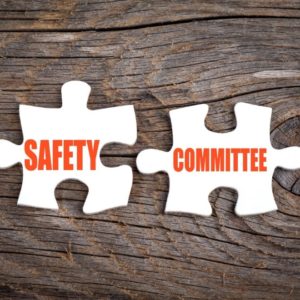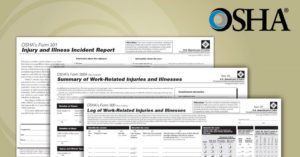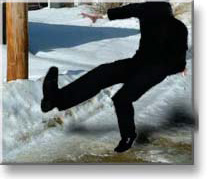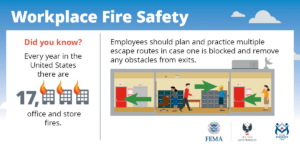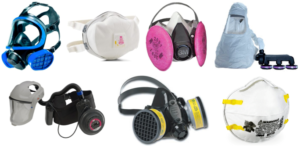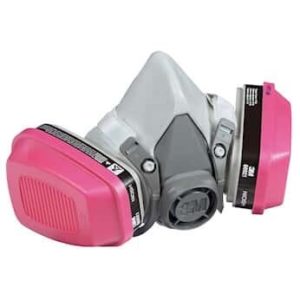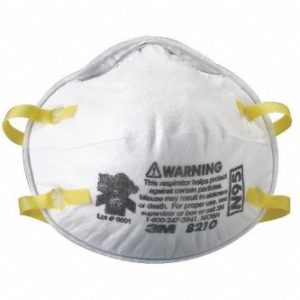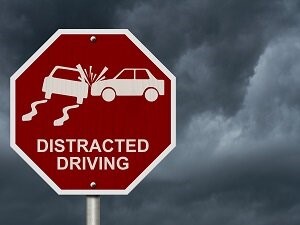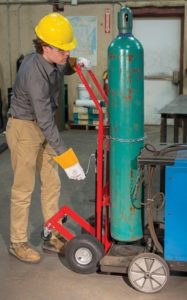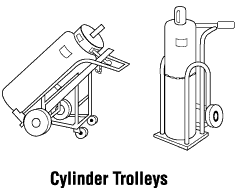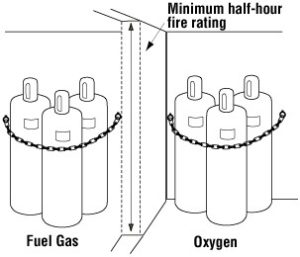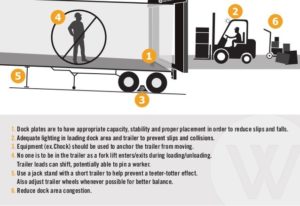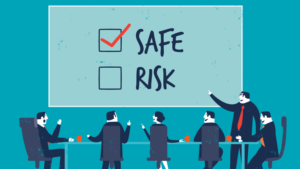10 Leadership Principles to Deliver Safety Results
April Safety Tip
10 Leadership Principles to Deliver Safety Results
When a company lists safety first in its values, what do leaders have to do to back up that statement?
GTI Group, a logistics company, says this about Safety on its webpage:
“We do the right thing. Period. The safety of our employees, clients and the public come above everything else. We operate within the letter and spirit of the law. Every team member is unconditionally empowered to call a safety time-out.”
At the National Safety Council’s fall 2021 conference, Brian Fielkow, CEO of GTI, said there are 10 principles he’s used to help deliver safety results that he’s proud of:
- If you have a sign that says, “Safety is our No. 1 priority,” tear it down.Safety isn’t a priority; it’s a non-negotiable core value. Priorities can be rearranged. Values, on the other hand, are the adhesive that holds a company together. If safety isn’t in your values statement, put it there. Safety has to be the guardrail that guides every decision a company makes. Nothing can get in the way.
- Power vs. authority: Know the difference.Fielkow said he could send out an email that says so-and-so is the CEO. That bestows authority on the CEO. Authority is easy, but Fielkow says he can’t give anyone power. You can only earn power by the way you show up – the interactions you have with your co-workers.
Fielkow says at GTI subsidiary Jetco, they asked drivers to elect a committee of their peers. This was a group that was elected to help govern the company. The group elected a chair who is involved in any decision in the life of a driver.
This is a way to knock down the toxic silos between the frontlines and top management. If you capture the power of frontline workers in this way, they’re better able to help you make changes. There are opinion leaders among your employees. Are they working for you or against you? Bring them in. Help them become your change agenda. To do that, you have to identify the people who have power.
- Treatment, transparency, trust.A lot of us are trained to think about safety in our heads. Safety has to begin in the heart, according to Fielkow. The ultimate form of poor treatment is anonymity. Get to know a thing or two about people who work for you. Is there a little league game? Is someone sick at home? The more connection that’s built with employees, the more they will engage in safety. If the employee feels they matter to someone in the organization, they become engaged.
Transparency is giving people the dignity of an explanation of why a change is being made. Those who are included tend to support change. Those who are excluded tend to oppose it.
You can’t build a healthy safety program without trust. Work on building bridges with employees. Fielkow says one of their favorite ways to do this is, every couple of years, they send a box of crayons, blank paper and a letter to families, asking kids to draw what safety means to them. Their drawings become the company calendar which they send to their employees and customers.
- Create a just culture.Get rid of progressive discipline. Fielkow says instead, create a just culture. When an employee makes a mistake, the question should be, was it an honest mistake or deliberate and reckless?
If someone has made an honest mistake, GTI coaches, trains and makes systemic changes.If it’s reckless behavior – driving 50 mph in a school zone for example – that’s one strike and you’re out.
Fielkow says they had a night driver who fell asleep and ran off the road. No one was hurt. They looked at the situation, including his tenure and previous performance and made a decision: He was going to stay with us. What he offered to do was remarkable. He made a five-minute video which was riveting. He said, “I didn’t rest. I thought I was invincible.” The video was made available to all employees. GTI didn’t force the driver to do this. Fielkow says you can’t put a price on the fact that he was willing to take his mistake and teach his peers. He’s not going to fall asleep at the wheel again.
- When you’re conducting root cause analysis, look at the organizational factorsas well as the individual behavior.
A company can cause an incident as easily as a person, says Fielkow. How can a company cause an injury? Insufficient, unclear processes. Reward systems that incentivizes productivity over safety.
When he retired as chairman of the National Transportation Safety Board, Robert Samuel was asked what he had learned after being at the agency for 15 years. He said procedures are written for a reason. Studies show that once you deviate from standard operating procedures (SOPs), you’re more likely to have consequential errors.
Professionals follow procedures. They do the right things when nobody’s watching. Sometimes people spend more time figuring out how to skirt the rules than actually complying with them. This is at the heart of so many safety failures – a lack of respect for process. Do you consider your frontline employees to be professionals? If you treat people like you want them to be, that’s who they will become. Treat people like children, and they’ll behave like children. - If your processes aren’t understandable by the intended audience, then you don’t have processes.You just have words on paper.
GTI asked its drivers to write their handbook, The Jetco Way. The company gathered four or five drivers who were good at a particular topic together with a writer who wrote up what they said. The drivers reviewed what the writer put together. All processes are a maximum of four or five sentences.
Fielkow recommends the book, The Checklist Manifesto. It’s by a surgeon who noted that, even with lots of processes, there were still a lot of errors being made in operating rooms. The surgeon came up with checklists for everything related to surgery, including before and after.
The lesson: Convert processes into checklists and use them. If you keep the checklists as simple as possible, you’ll get better results. People don’t need to be taught as much as they need to be reminded.
Fielkow recommends developing your company’s life critical rules. These are rules where violations are more likely to kill or maim. It’s true that all rules are important. But some rules stand above others. If everything is important, then nothing is important.
GTI called its life critical rules The Serious Six. The rules are printed in wallet card format. Now, “No one ever told me,” can’t be an excuse, according to Fielkow.
- Dismiss severity.Fielkow says the fact that an incident had a major or minor outcome isn’t the most important thing.
Example: A driver tears up some grass. No big deal? No. The driver wasn’t situationally aware. It’s only luck that the driver didn’t hit a kid.
To be good at prevention, don’t treat the behavior behind a minor incident any differently than a major one. Do root cause analysis 100% of the time. It doesn’t all have to take a long time and be formal.Fielkow says a lot of times we come to the table with our minds made up, and we form the analysis to meet our own conclusion. To counter that, bring in someone from another area to help with the analysis.
In 1996, TWA Flight 800 exploded and crashed into the Atlantic Ocean. More than 200 people died. People thought it was terrorism. But a four-year NTSB investigation found an internal explosion in one of the plane’s fuel tanks was caused by a coated electric wire that ran through the tank. Why was an electric wire in the tank? It was conventional wisdom at the time that, if it was coated, it was safe. Once the coating wore off, the wire was exposed. Insufficient maintenance and design defect were the root causes.
The lesson: Never stop asking questions until you get to the bottom line.
- Focus on leading indicators.Most indicators are a look in the rearview mirror. Leading indicators predict outcomes.
The Accident Pyramid says for every 600 near misses, there are 30 accidents with property damage, 10 minor injury (first aid only) accidents and one serious injury accident. If you want to reduce serious injuries focus on the near misses, property damage accidents and minor injury accidents.
Counting near misses is a leading indicator. Want to get more near misses reported? Stop calling them near misses. Instead, call them good catches. Make sure there’s a way to report good catches confidentially. Key: Employees should have no fear of retribution for reporting.
- Tear down silos.Companies need to have divisions. That’s OK. Silos are the kiss of death. What constitutes a silo? It’s a state of mind. If someone else is drowning, “too bad.” That’s a silo.
Fielkow says once upon a time, he would have Operations meetings on Monday, and he would hear a lot about how the Safety team doesn’t get it. He’d have Safety meetings on Tuesdays, and he’d hear about Operations playing cat and mouse.
On Tuesday night, Fielkow says he’d take two aspirin and try to figure out how to create harmony. Fielkow says he created his own silos – it was his own fault.
We create silos by how we incentivize people and who we invite to the table at meetings. So Fielkow doesn’t have Operations or Safety meetings anymore. Now they’re in the room together. Every company has silos, and generally they’re there because the company built them.
Here’s a story Fielkow heard about another company: They had an Operations Manager and a Safety Manager who were both great, but they hated each other. They couldn’t get along. So the company president told them they were going to switch jobs for two years. They couldn’t wait to get back to their old jobs, and they had a new respect for the other person and their challenges. Can all companies do that? No.
But Fielkow says at GTI they have ride-alongs with their drivers. It helps others appreciate what goes into being a truck driver.When it comes to safety and silos, Fielkow says there’s one thing that has to be understood: Operations is responsible for the execution of Safety. Safety pros must teach, train, coach, mentor and ensure accountability. But companies can’t allow the safety department to become the receptacle for safety problems because that’s not teaching teams how to address the safety issues and practice prevention.
Allowing people to think safety isn’t their responsibility is a dangerous silo. Why? Because it allows workers to think that safety is the responsibility of the Safety department, instead of being responsible for it themselves.
- You can’t win them all, don’t try.Your employees have to be at the intersection of your company values and being technically excellent, according to Fielkow.
When you have a person who is really aligned with your values but isn’t technically competent, you’re going to try to train that person, or else they can’t be at the company.
But what about an employee who is technically proficient, but they think the rules don’t apply to them? Now you have a big problem.
You might think, “We’re busy, I don’t have time to fire this person.” You don’t have to fire the person. Coach them. And then coach them some more. But at some point you have to come to the realization that some people are uncoachable.
Here’s a mistake Fielkow says he made. They had a driver who was a real team player. His attitude: Where and when do you need me? I’m there. Common sense said he was able to do this because he was probably cutting corners.
One day Fielkow was driving to work, and a truck passed him at 80 mph in a 50 mph zone. It was that driver. It was a wakeup call. The driver was fired.
If you look the other way in these situations, you’re sending a horrible message to those working their tails off to get their jobs done and live up to your values. It tells them that they don’t matter.
When you’re trying to enact change, Fielkow says you’ll have 20% who know where you’re going and why; 60% who are scared, and that’s OK; and 20% who have made up their minds and miss the good old days of the way we used to do things. You’re better off without the last 20%. The faster you lose those people, the faster you can make change.
Source: www.SafetyNewsAlert.com

